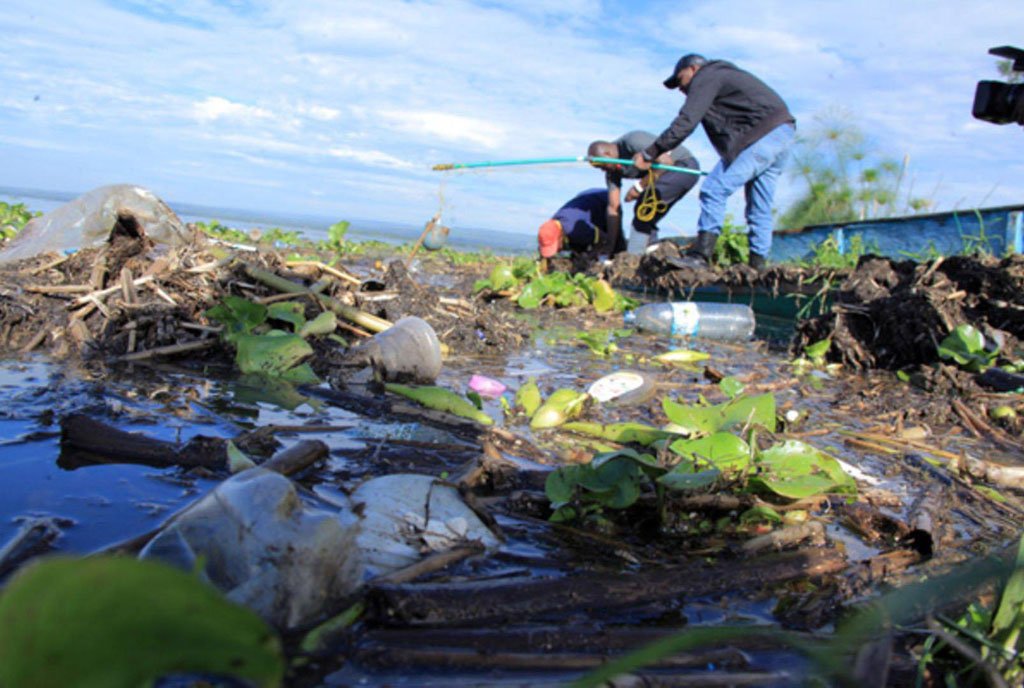Textile industries polluting Lake Victoria – report
What you need to know:
- The report found that industries do not observe the buffer zone rule, and their waste pipes release sewage directly into the lake.
Some textile industries are in the spotlight over alleged massive pollution of water bodies, a new report has revealed.
The study conducted by Pro-biodiversity Conservationists in Uganda, an environmental civil society organisation, notes that major pollution comes with devastating side effects that heavily affects the surrounding community and aquatic life.
The study titled; ‘The status of Industrial Pollution by Textile Industries in Uganda,’ was conducted from December last year to March this year with focus on industries on the shores of Lake Victoria, particularly in Walukuba-Masese in Jinja District.
The report observed that many industries along the study site erected their fences with no regard for the buffer zone requirement as per the national environment management regulations, which state that any structure on the shores of a water body should leave a buffer zone of 200 metres.
The report also found that at some parts, the waste pipes release sewage directly into the water. “It should be noted that because of the increasing water levels of Lake Victoria, the discharge pipes of waste water effluent from the factory have been buried by water. The effluent thus goes directly into the water outside the fence,” it stated.
Mr James Muhindo, the coordinator of report, yesterday said textile industries are supposed to have plants to discharge waste, which is not the case in Uganda.
“If you check world over, it is very difficult to find a textile industry without a discharge, which is not the case here according to our findings,”Mr Muhindo said.
“We have advised that in such a situation, the relevant government bodies stop these textile industries from operating until necessary mechanisms are put in place since the discharge is affecting many people who use the water and the effects might not appear now, but in the long run,” he added.
“From this site, both water and soil samples were collected. There were a number of discharge source points along the perimeter wall fence of Sunbelt Industries factory, neighboring a plot planted with bananas, which residents reported was owned by Keshwala Group of companies. It should be noted that because of the increasing water levels of Victoria, the discharge pipes of waste water effluent from the factory have been buried and covered by water. The effluent thus goes directly into lake water outside the fence,” the report highlights.
When Monitor contacted Sunbelt, the receiver said the executive director and spokesperson were unavailable.
Contacts that we obtained from the website of Keshwala Group of Companies went unanswered.
There were also concerns from the fishermen that fish stocks around the area had dropped due to chemical pollution from textile industries.
“The fishermen observed that in some instances, the fish collected near the fence of [some of the industries] usually smell of oil when boiled,” states the report.
Ms Naomi Namara Karekaho, the spokesperson of the National Environment Management Authority (Nema), said they are aware of the issue and are in talks with the particular industries.
“We are in touch with them to make sure they comply. One of the industries was recently closed, however, they were allowed to reopen on condition that they build a treatment plant, which they did but it seems it is not functional. There will be an inspection this week to follow up the issue,” she said.
ALSO READ: Who’s to blame for pollution at home?
According to the report, none of the industries along the study site have a retreatment facility onsite.
Water and soil samples from the study site indicated high levels of colour, chemical oxygen, oil and grease and heavy metals. Textile industries generate one fifth of the world’s industrial water pollution, and use 20,000 chemicals.
Recommendations
•Nema should direct the closure and or suspension of operations for Sunbelt Industries.
• The industries and companies implicated should comply with the laws and regulations, especially the Standards for Discharge of Effluent into water or land) regulations 2020 and there should be a deliberate effort to respect the buffer zone.
• The industries should work to implement the mitigation measures highlighted in their environmental and impact assessments for mitigation of water pollution
•Name and shame, and call for the suspension of licences and permits the companies involved in this unabated pollution
• Demand for reparations for affected members of the community, at the expense of the companies that are found not to have the necessary mitigation measures.
• NEMA should ensure that the textile industries comply with the standards for discharge effluent with immediate effect
• NEMA should carry out routine environmental inspection, request for the Environmental impact assessment report
• NEMA should revisit the conditions for the Environmental and Social Impact Assessment Report that were given to these industries and require them to operate according to the environmental standards
• Directorate of Water Resources Management, Fisheries Research Institute and the Nile Basin Initiative (NBI) need to step up their oversight role and monitoring of the environmental impact the factories along the shores of Lake Victoria are casing to the lake
• Solicit the intervention of other licensing and regulating government ministries, departments and agencies such as the Uganda Investment authority and Jinja City Council to take action against the implicated factories.

